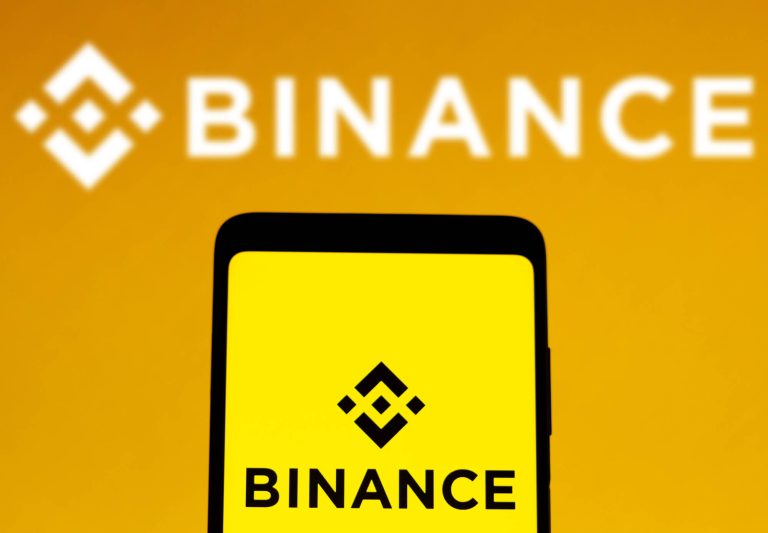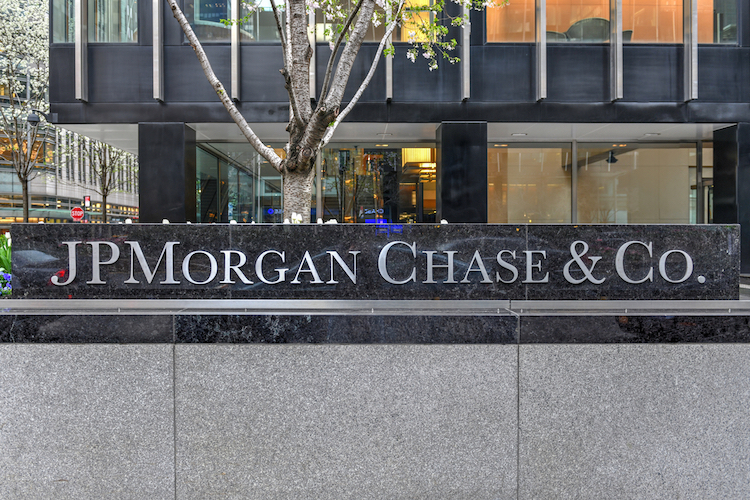A summarizing review of what has been happening at the crypto markets. A look at trending sectors, liquidity, volatility, spreads and more. The weekly report in cooperation with market data provider Kaiko.
US inflation data buoyed markets last week before the Fed's latest dot plot gave traders a reality check. Elsewhere, ZKsync is set to airdrop 3.6 million tokens this week and ProShares joined the ETH ETF race after sitting out of the BTC launch. This week we will explore:
- How Bitcoin is maturing as an asset
- The tokenised funds boom
- Falling volume on Korean exchanges
Bitcoin’s dwindling volatility signals maturity
The fervour around macroeconomic updates in the US last week saw BTC take a whistle-stop tour from $66,000 on Wednesday morning to within touching distance of $70,00 later that day. It ended the week trading just above $66,600 again, according to the Kaiko BTC Benchmark Reference Rate.
Overall, BTC dipped by just over 4% last week, with selling outpacing buying on nearly all exchanges. The net cumulative volume delta (CVD) for top BTC trading pairs reached $518mn between June 10- 14, with Binance and Bybit witnessing the most selling activity.

Although BTC might have been on a rollercoaster ride driven by macro news last week, it's clear that the digital gold has reached a new level of maturity in 2024. This can be observed in its declining volatility, with BTC's 60-day historical volatility remaining below 50% since the beginning of 2023. This stands in stark contrast to the significant fluctuations of 2022, when volatility exceeded 100%.
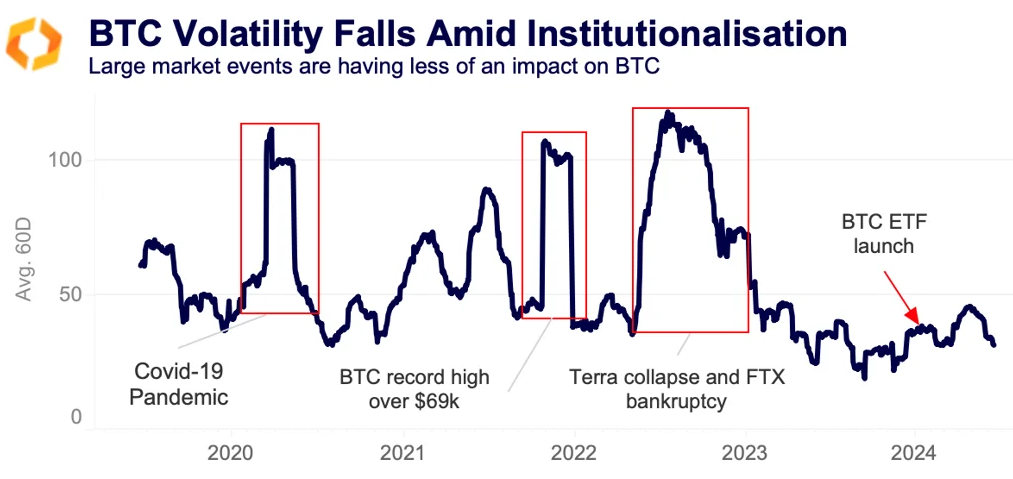
In 2024, BTC hit an all-time high with volatility at 40%. This was far lower than 2021 — when volatility spiked to over 106% as it reached record highs. Even the launch of spot BTC ETFs in the US was relatively muted on the volatility front.
While it's too early to suggest that this is the new normal, changes to Bitcoin's market structure over the past year may help explain why price action has been relatively 'boring.' The US market close now commands a higher share of trading volumes, as BTC liquidity becomes more concentrated around the East coast trading window.
Therefore, we shouldn't ignore BTC ETF demand trends when looking at Bitcoin's price trends. Likely, the reversal of inflows in US BTC ETFs last week contributed to some of the selling pressure, as did macro news.
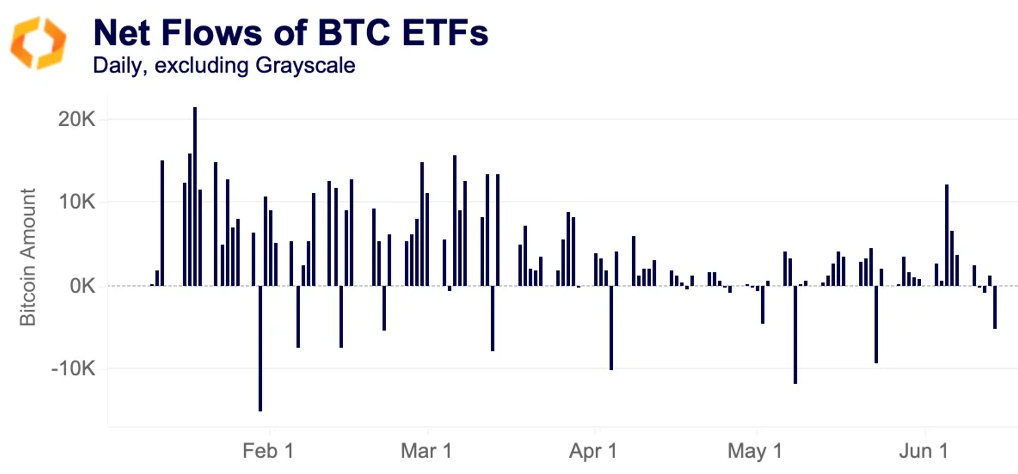
Further emphasizing the changing landscape, BlackRock overtaking Grayscale's GBTC in terms of assets under management highlights this shift. The $10 trillion asset manager now holds the title of the world's largest spot Bitcoin ETF, having leapfrogged the crypto-native incumbent.
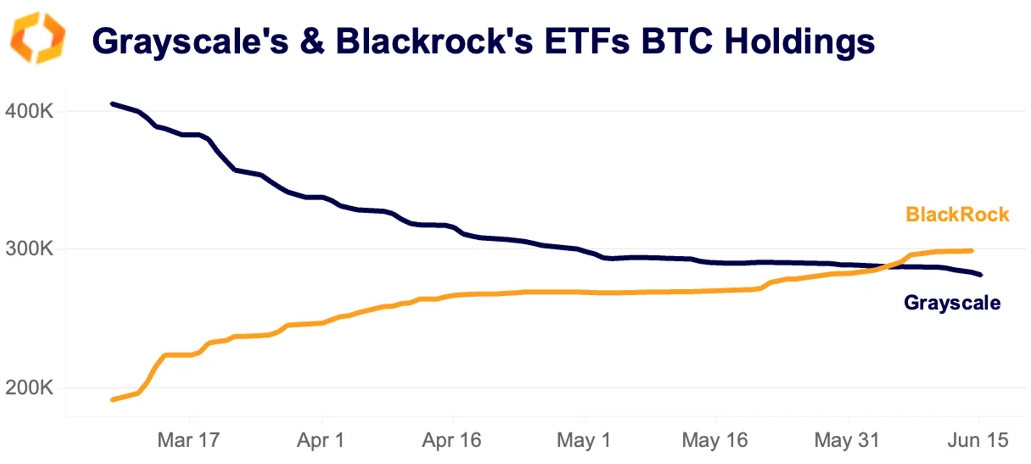
TradFi dominates tokenisation trend
Last week, Fidelity International announced its participation in JPMorgan's tokenized network, becoming the latest institutional player to join the rapidly growing tokenization trend. In parallel, BlackRock's BUIDL, its tokenized liquidity fund, continues to grow and has now accumulated over $460 million.

Since its launch in March, BlackRock's BUIDL has outpaced several crypto-native firms, including Maple Finance's Cash Management Fund, which focuses on short-term cash instruments. Although Maple has been active in the space for years and recovered from the 2022 crypto lending services collapse, its Cash Management Fund has only amassed around $16 million in assets, paling in comparison to BUIDL.
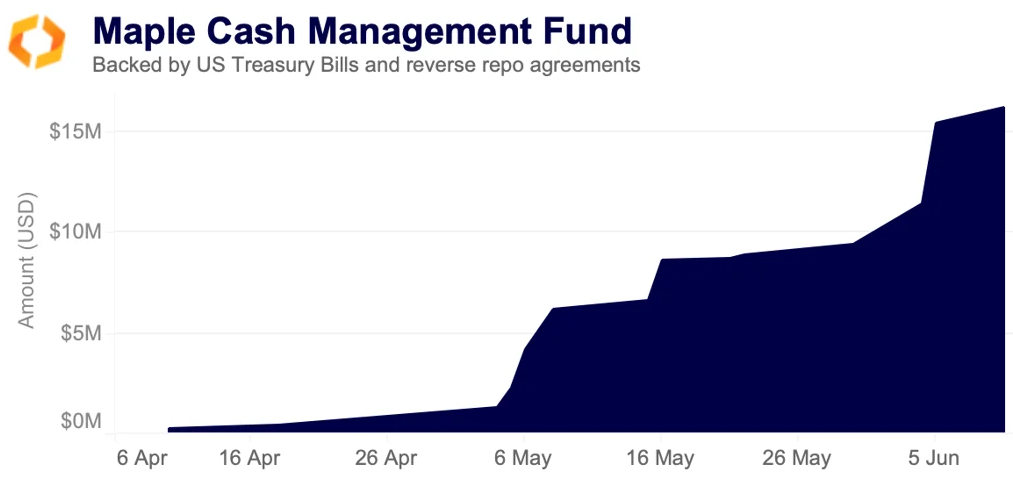
Meme tokens liquidity improves
Despite the recent market correction, meme tokens continue to be among the best performers this year, outperforming Bitcoin and other altcoins. Meme tokens liquidity, as measured by the 1% market depth, has also surged, doubling since the start of the year. It reached an all-time high of $128 million in early June before retreating slightly.
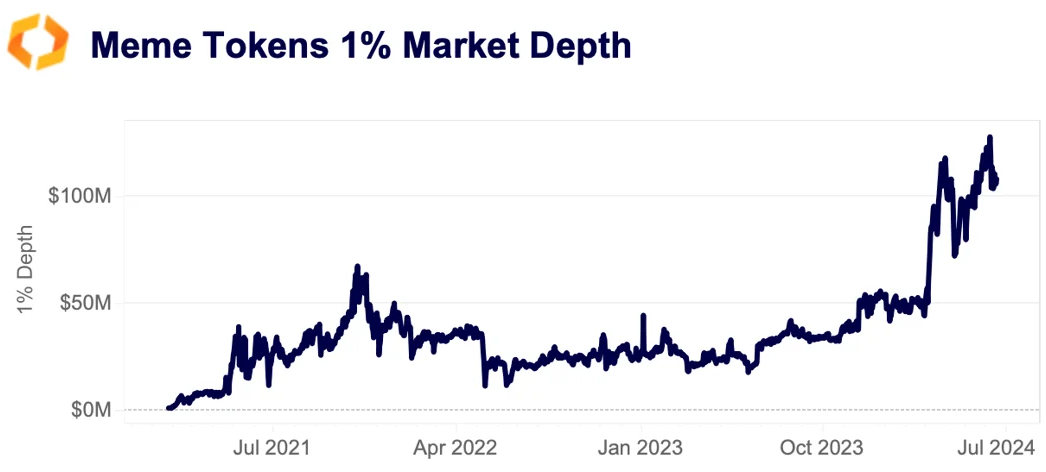
While part of this increase is related to price appreciations, many small-cap meme tokens such as Dogwifhat (WIF), Memecoin (MEME), or Book of Meme (BOME) have seen significant growth in liquidity in native units, ranging from 200% to 4000%. However, the cost of trading these tokens remains high, with bid-ask spreads exceeding 2 basis points on most exchanges.
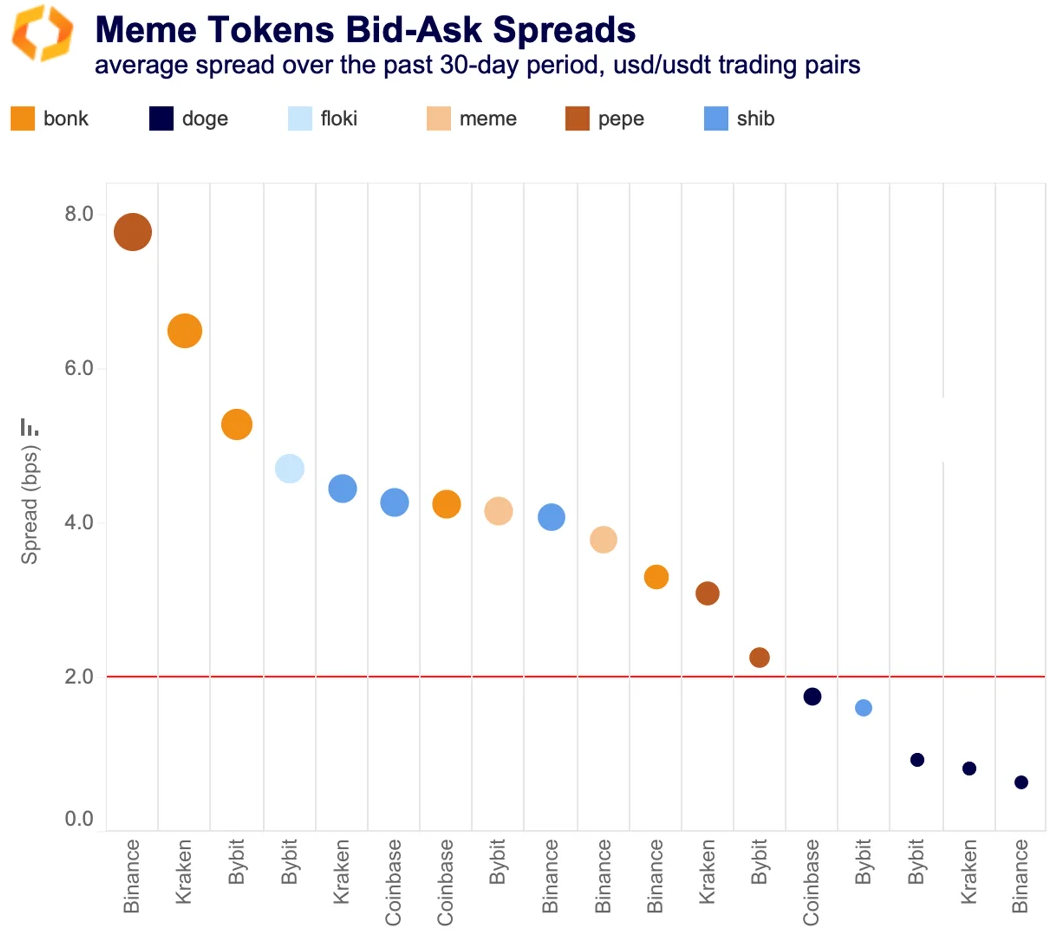
This suggests that while more market makers are venturing into providing liquidity for these tokens, they are still considered risky due to their high volatility. As we noted earlier, the price discovery of meme tokens is relatively more focused on derivative markets, making them prone to cascading liquidations, which can exacerbate price swings.
Korean exchanges lose steam
After briefly surpassing USD trade volume in Q1, Korean Won (KRW) trade volume has slowed markedly in Q2. The weekly trade volume on the four major Korean exchanges—Upbit, Bithumb, Coinone, and Korbit—has declined to $6 billion in early June from an average of $35 billion in Q1. The decline was particularly strong on Upbit, which has seen its market share relative to its main local competitor, Bithumb, retreat to 67%, its lowest level since February.
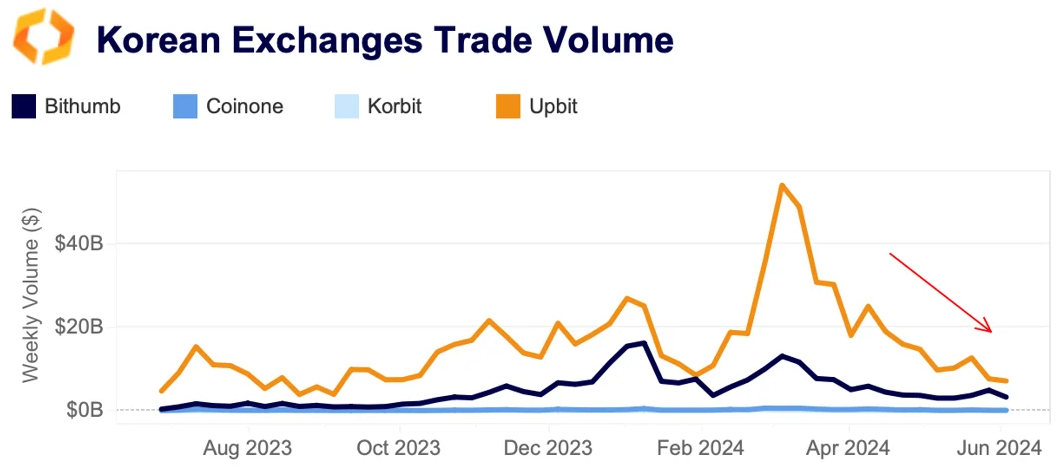
One explanation for the decline could be softening risk sentiment following stickier than anticipated inflation in the US and a repricing in Fed rate cuts expectations. Upbit and Bithumb both offer a higher number of large volume trading pairs than other exchanges. The top ten pairs by cumulative volume accounted for only 43% of Upbit's trade volume, compared to 70% on Coinbase and Kraken.
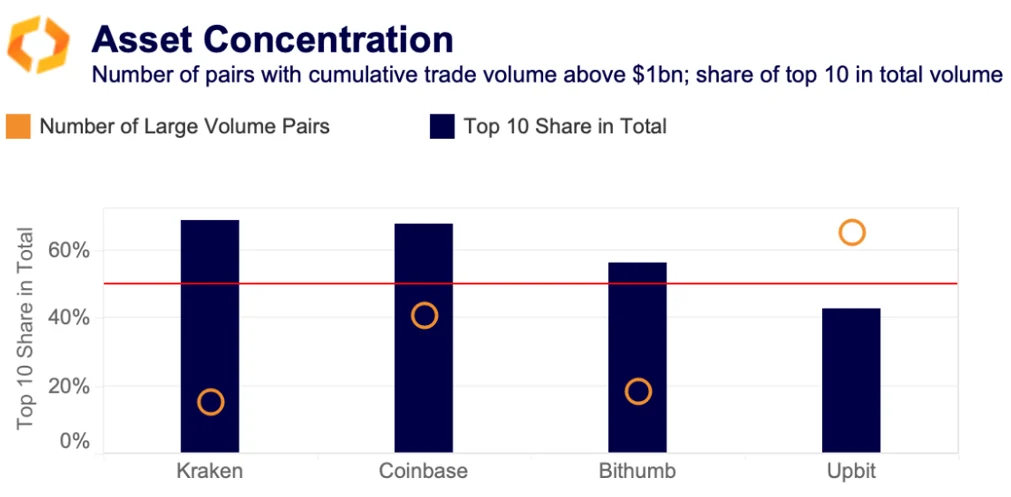
However, as we mentioned in our Deep Dive on liquidity this does not always correlate with better liquidity conditions. Many of the most popular assets are small-cap altcoins driven by swings in speculative interest.
Liquidity is improving on US exchanges
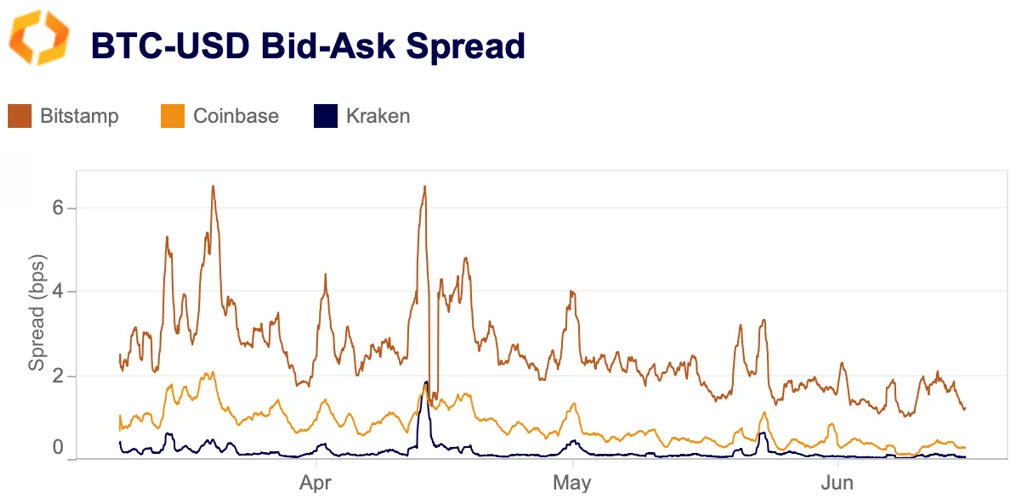
The bid-ask spread on major US exchanges has significantly decreased, indicating better liquidity for bitcoin. The spread represents the difference between the highest buyer's price and the lowest seller's price, with smaller spreads signaling a more liquid market. Spreads have fallen from 2.3 to 1.9 basis points on Bitstamp, over 1 to 0.3 basis points on Coinbase, and 0.4 to 0.1 basis points on Kraken.
The introduction of spot BTC ETFs likely contributed to this trend, as other liquidity indicators like market depth also improved. This liquidity enhancement is beneficial, considering Q3 has historically seen the lowest Bitcoin trading volumes.



